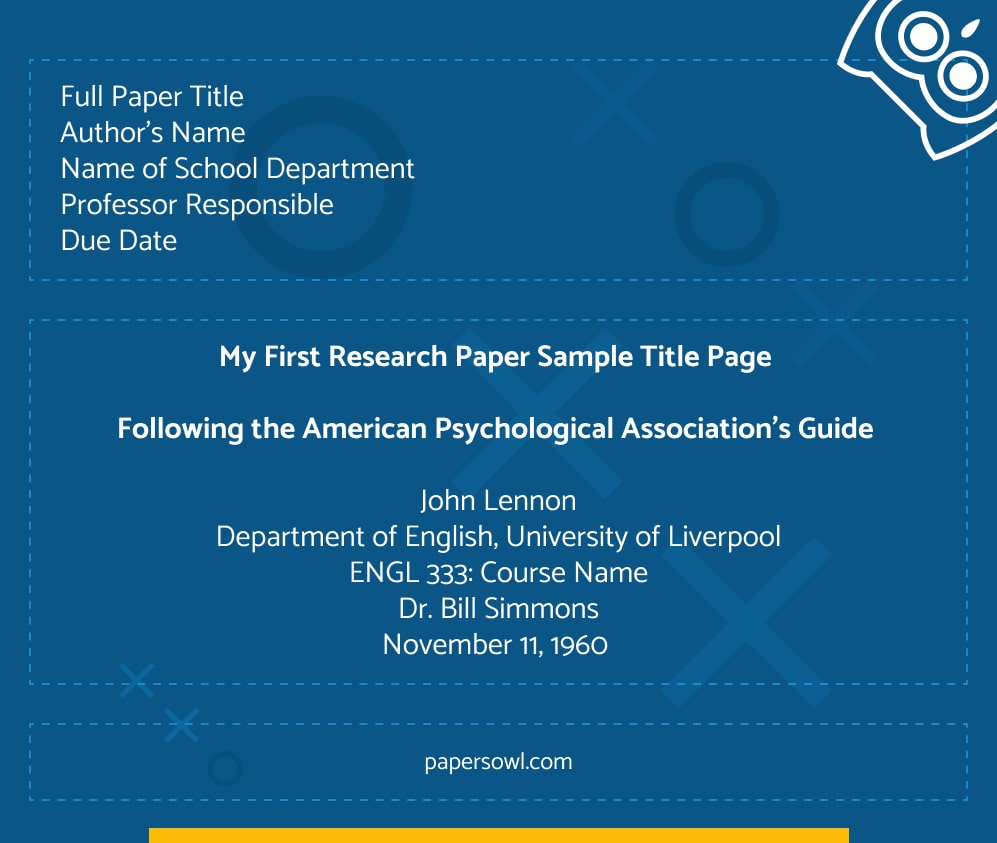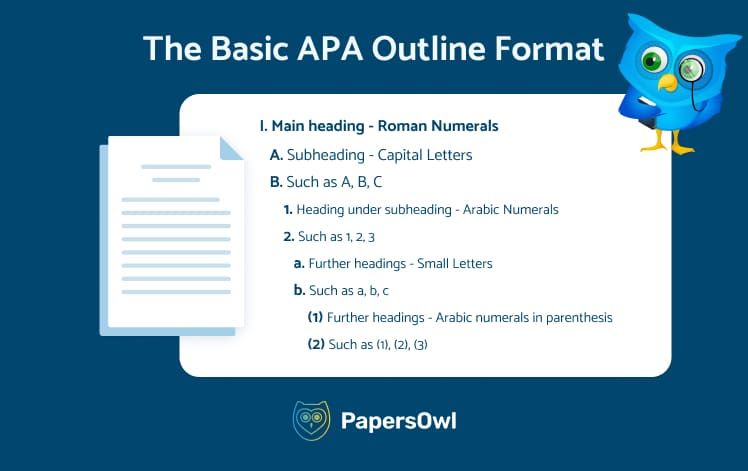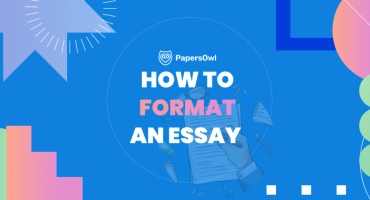How to Write a Research Paper in APA Format
Table of contents
- 1 Understanding APA Research Paper Format
- 2 What’s New in APA 7th Edition?
- 3 General Requirements Published by APA Publication Manual
- 4 Formatting Main Parts of Research Student Papers and Professional Papers
- 5 In-text Citations
- 6 Rules for Abbreviations
- 7 How to Use Numbers in APA?
- 8 Rules for Punctuation
- 9 Usage of Graphics (Photos, Tables, and Figures) in APA
- 10 APA Style Helps to Make Your Research Unique and Accurate!
The APA writing style format stands for American Psychological Association and represents a set of rules and conventions used in research papers. This guide will help you learn basic APA formatting guidelines and showcase the practical use.
- You will learn the general requirements for the APA format.
- We focus on the general structure used in the APA research paper.
- You will master in-text citations by exploring various examples.
- An analysis of abbreviation rules, punctuation, and numbers in APA.
- An exploration of graphics, tables, and figures used in APA research.
Take the time to look through each APA publication manual, which is presented below. If you are new to APA format or need to check yourself before submitting your research assignment, you will find help!
Understanding APA Research Paper Format
By learning to write research papers in APA and understanding the APA publication manual rules, you can organize your arguments and credit both primary and secondary sources. The purpose is to give due credit and avoid plagiarism issues. Understanding the format well is directly related to being academically successful.
APA can be used for almost any style of research work because it is meant to represent references and is a unified style used for research purposes. Moreover, this style improves accessibility and allows readers to comprehend things more easily. Correct consistency, line spacing, citation format, and punctuation rules allow one to focus on the paper’s content and structure by easily finding all the required bits. The most important aspect of understanding this research question format is knowing how to provide credit to original authors and implement various types of citing.
Formatting your research paper in APA style can be a meticulous task. If you need assistance, a custom research paper writing services can help ensure your paper meets all formatting guidelines.
The APA manual guidelines for the style are constantly updated according to feedback from researchers and educational stakeholders. Reviewing the shortened version manuals, authors use the same credible and well-recognized format, making their research content organized, unique, and easy to read.
Currently, in its 7th edition, the style constantly brings updates and corrections that have been officially published in the American Psychological Association manual.
What’s New in APA 7th Edition?
If your college professor asks you to submit a research paper in APA 7th edition, yet you do not know the APA format, have no worries! it means you should follow the latest specific guidelines and changes since the prior formatting style. The major update mostly focuses on the differences between a professional research topic paper and a basic student assignment regarding accessibility. You will also encounter diverse writing examples that can be followed, as well as brief APA guidelines. We have narrowed things down to the most important changes, including the title page in APA style. Since the talk is about a research paper, its presence in real life becomes essential.
A format cover page with a page header for a standard-sized paper must include the following elements. This is the first page in double spacing:
- Paper’s title page
- Student’s name (no middle initial is required here)
- Affiliation (school, university, department, etc)
- Course number and title
- Your course instructor’s name with the middle initial, if available
- Institutional affiliation for a student paper is important as well
- Submission date or publication date for an article title
Recommended fonts include:
- Times New Roman, pt. 12.
- Calibri, Arial, Georgia, pt. 11.
- Lucida, Sans Unicode, Computer Modern, pt. 10.
Running heads with header flush left style is no longer necessary when writing a paper in this format. When dealing with a professional paper or something meant for publishing, omit the “Running Head:” part in the title case before your title’s paper. The general format still requires adding page numbers in the upper right-hand corner!
APA 6th edition: Running Head: Video Games and Teenage Violence Cases
APA 7th edition: Video Games and Teenage Violence Cases
Some other updated APA 7th edition rules for professional papers include:
- Pronouns should include “They” as a gender-neutral construction.
- Bias-free language guidelines have been added to focus on socioeconomic status, cultural norms, and intersectionality.
- Spacing after sentences should be single.
- Minor changes were also made to tables and figures. Tables and figures should include a name and number above each element and a note underneath.
- If you implement three or more authors for your source or author note, you can shorten your multiple authors’ references with the Latin “et al.” addition after the author’s first name.
APA 6th edition: (Blake, Jones, Yannick 2021)
APA 7th edition: (Blake et al., 2021)
- The publisher’s location is no longer required when you cite books for a research paper.
- E-books do not need the medium part (Kindle, PDF, etc).
- The use of DOIs should be formatted as a hyperlink.
- URLs do not need the “Retrieved from” part.
General Requirements Published by APA Publication Manual
The main requirements include attention to the paper’s length, margins, basic page layout, Roman font, and structural elements.
- Recommended introduction and conclusion should be 15% of the total word count.
- The margin requirements should be 8.5 x 11 inches, double-spaced for the entire paper.
- The distance must be one-inch margins, as based on the APA manual.
- The recommended font size for an APA research paper is Times New Roman, 12-point.
Title Page Components
The latest edition requires an updated APA title page for the research paper. One must include the paper’s title, the author’s name, your institutional affiliation, course name, instructor’s credentials, and the assignment’s due date. The rest of the rules for student papers when writing in APA format for a title page in APA are:
- The title should be centered and typed in a bold font.
- Your paper should have a title that is one or two lines long.
- The author’s note must be included with the page numbers.
- The title page may contain both uppercase and lowercase letters.
- Do not make your title irrelevant, and avoid abbreviations.
- The title’s formatting should be double-spaced for professional papers too.
See this template and example:

The rules will change when it’s not for the college paper title. It means that student and professional papers are different! If you are dealing with a professional paper, your title should be followed by your research’s location and institutional affiliation. Such papers will include special notes from the author in three paragraphs. The first paragraph should include the author’s name and a special ORCID ID. If the author is deceased at publication, such information goes to the second paragraph. The third professional title paragraph must include various paper acknowledgments and disclosures as per APA paper requirements.
Running Heads
Running heads are no longer necessary when you are dealing with student papers. Professional paper titles still require it by omitting the “Running head” element. The rules in APA 7th edition state the following:
- A running head is flushed to the left paper’s left.
- Your running head should be no longer than 50 characters with spacing and punctuation.
- The standard APA format running head must be all uppercase (capital letters) in the page header.
- The header includes the page number aligned to the right in both research paper types.
Table of Contents for APA Papers
While it’s not obligatory for APA research student papers, it may still be required to provide a roadmap for the readers. Still, if your paper is lengthy, include it. The rules for the table of contents state the following:
- The same font size and font must be double-spaced as in the rest of your paper.
- The table of contents begins with a centered “Table of Contents” heading.
- Place your table of contents in boldface at the top of the page after your title page.
- Unlike your title page contents, all the main headings must be aligned to the left.
- Subheadings are indented by five spaces.
- Lower-level headings may be included if necessary, yet they require additional indents.
- Your table of contents must have all headings in the title case and dotted lines between them.
- Use a corresponding page number to increase the readability.
- Supplementary and preliminary elements must be numbered per page number rules.
Formatting Main Parts of Research Student Papers and Professional Papers

While there may be additional paragraphs and elements, a paper will include a page header, an introduction with a thesis statement, several body paragraphs, and a conclusion. You must also include a title page abstract for certain cases and a reference page, which is an obligatory part of APA style requirements.
Abstract
Regardless of whether you have been asked to provide an outline or a title page abstract, the APA style outline for a research paper still requires the presence of an abstract. As a rule, it comes after the title page, becoming a brief outline or a paper summary. While an outline for APA research paper will include a list of bullet points, an abstract speaks of research objectives and methods. The purpose is to help readers understand what a research paper will be about. Do not include citations or information from journal articles irrelevant to the main assignment’s idea. When writing a research paper in APA format, one should provide a summary and represent content similar to the brief book’s description.
An abstract starts on a separate page with the word “Abstract”, which must be centered and not done in capital letters. The volume of an abstract should be between 150 and 250 words. The content of the abstract should reflect the paper’s structure and main idea or an argument presented in a thesis. The rules state that the list of keywords may also be required, especially for planning purposes. Separating your APA style paper by commas and using up to 7-10 relevant terms is recommended.
Body
Typical student papers will include an introduction paragraph, at least five body parts, and a conclusion. All the paragraphs come with an indent and relevant page numbers. An introduction comes after the paper’s title and an abstract. The main purpose of an introduction is to provide readers with background information and a critical analysis of empirical knowledge. One should explain as to why certain research has been conducted. If necessary, limit yourself to 1-2 citations in an introduction.
The body paragraphs may contain three to five paragraphs with the centered heading’s alignment. When dealing with a scientific research paper done in Microsoft Word, one should format academic papers correctly and start with the following parts:
- Methods.This part must be precise and comprehensive to help researchers replicate the method that you have used. It should be done in an explanatory tone with all major words included. The method paragraph can be divided into sections, such as Participants, Materials, and Procedure or Process. These sections must be present in bold font and aligned to the left.
- Results. The results in APA-style papers must speak of the analysis data and explain the results obtained. It is where you usually implement graphs, tables, and any visual information to boost one’s comprehension.
- Discussion. It is where you must interpret and compare your data analysis with existing literature reviews. The discussion section must be organized oppositely to your introduction but maintain title page ideas. Exploring APA for science papers, you shall see that you start with specific information by making things broader. Any limitations must be included here as a brief overview.
The final paragraph of your research paper must talk about the importance of your study and explain what has been added to research on the topic.
Reference Page
The reference is the heart of your research paper. It provides a detailed list of sources with page numbers that you have used throughout the APA formatted research paper that must be submitted.
- You must start on a new page by naming it “References” and keeping it centered and on top. The page number count continues.
- The first line of the reference page must be aligned to the left, and all the following lines must be indented.
- The references must be arranged alphabetically and double-spaced with a specified page number.
- Books and journal titles with a page number must be placed in italics when citing in academic papers.
- The punctuation and capitalization present in the source are retained even if they go against the writing standards. It is especially relevant when you write a Psychology research paper or deal with social sciences.
The reference page (like a title page) must be done clearly and contain all the necessary information (page numbers and publication date) for a source. If the source has insufficient data, it is recommended to avoid it as such a research paper loses credibility and is prone to plagiarism risks.
If you are struggling with citing sources and do not know if your findings are reliable, consult your academic advisor. Seeing an assignment sample under an expert’s guidance may be helpful.
In-text Citations
Once you include a citation in your research paper paragraphs, add the author’s name and the year of publication in parentheses. It is one of the possible ways to do that for your introduction paper or elsewhere. The thing is that the style provides two ways to work when citing sources.
- Parenthetical citations: They are more common in academic writing. These require reference elements (author and the year of publication) at the end of the sentence in parentheses. See this APA research paper format example:
Most rock musicians during the 1970s went after social and political activism (Bradley, 2023).
- Narrative citations: These make it possible to present your obligatory citation elements inside the sentence. It means you do not have to keep things repetitive or overly complex.
According to Bradley (2023), most rock musicians during the 1970s went after social and political activism.
- If you have two authors in your paper in APA format that are mentioned in the source entry, a parenthetical reference must mention them both:
(Lake & Emerson, 2009)
- If your source lists three or more authors, a parenthetical reference adds the Latin “et al.”, which means “and others.”
(Lake et al., 2008)
- The authors’ names must be structured differently as long as you have more than one author. Things will change if there is no author listed.
Sometimes, you have to cite a web page or an organization where you won’t have such information available. In such a case, style format requirements ask for the institution’s name or a web page to be listed. Alternatively, you list the page’s name or an article you plan to cite. Remember to indent paragraphs and use the page header in your reference list!
Rock concerts help to raise thousands for domestic abuse victims. (2006). The Herald Review. URL.
- A journal article published in APA 7 research paper format will look this way:
Mills, C. (2013). The benefits of green tea for college students. Primary Health Care, 29(4), 34-39. https://doi.org/xx.xxxx
Rules for Abbreviations
When an abbreviation is planned for use less than three times, it is recommended to provide a complete description in your research paper. The rest of the general format rules:
- If you use abbreviations, periods are not required between each alphabet.
- When abbreviations are unfamiliar to your target audience, spell them the first time they are used. Then, the shortened version is used.
- If abbreviations are present in the dictionary, spelling them may not be required for a student paper.
- Speaking of units of measurement, an abbreviation may be used when placed next to a number in your APA format science paper. When it’s alone, it must be spelled out.
- Abbreviations should be used judiciously to guarantee that every bit is understood clearly.
- Double-check abbreviations for journals by checking relevant databases and follow APA guidelines for all subsequent pages.
How to Use Numbers in APA?
The latest edition has certain rules for using numbers. The most important thing is to write out numbers less than 10 in the text. Now, you have to leave numbers above this number “as is”, as done in the paper example below:
12 kilograms of fruit
Seven scientists have pointed out that…
It is much better to write numbers out in your text when you start with a sentence and include a number. If these formatting rules become too complex, you can hire a professional to write my APA paper for me to ensure accuracy. The same is true when you have a fraction or add a commonly used phrase or a word for an article title.
When providing numerical data, you must maintain consistency and double-check the provided information. These APA guidelines for research paper apply to footnotes or additional auxiliary information you may decide to provide.
Rules for Punctuation
Although the style manual has many pages dedicated to punctuation, the general writing style rules apply. Writers should consider basic grammar rules, except citations, where different conventions apply. The only change one must consider is using a single space after punctuation marks. Formatting requirements ask for an Oxford comma that should be placed. No space is placed or applied on either side if you plan to use em dashes.
- Use a semicolon to separate items in a list when those items contain commas (e.g., The authors included studies from Carey, 2011 Jones, 2012; and Wales, 2018).
- Use a colon to introduce a list, explanation, or example (e.g., The research addressed the following topics: data collection, analysis, and interpretation).
- Use parentheses to enclose supplementary information or citations (e.g., The participants completed the survey (see Appendix A) before the experiment).
- If the entire sentence is in parentheses, place the period inside the closing parenthesis (e.g., This is an example of a complete sentence in parentheses.).
- Use double quotation marks for direct quotations (e.g., The author stated, “The findings suggest a strong argument.”).
- Use single quotation marks for quotations within quotations (e.g., He said, “She told me, ‘It’s essential to make an excellent APA research paper title page.'”). Only the first letter is capitalized!
- Use an apostrophe for possessive forms (e.g., The author’s research findings).
- Use an apostrophe to indicate omitted letters in contractions (e.g., it’s for “it is”).
- En Dashes and Em Dashes
- Use an en dash (–) to represent a range of values (e.g., pages 20–30).
- Use an em dash (—) to set off a parenthetical phrase or to indicate an abrupt change in thought (e.g., The experiment—conducted over two months—yielded interesting results).
- Use brackets [ ] to enclose editorial comments within a quotation, especially when clarifying pronoun antecedents (e.g., “He [the participant] completed the task.”).
The rest of the research paper format rules that must be mentioned include the following:
- When citing an in-text source or writing an introduction, it must be placed before the final punctuation mark. See this example: The scientists have invested over 10,000 samples to help enhance the study group (Jones, 2016).
- When unsure about punctuation or the rules for a particular citation, the essay writing service can help you avoid plagiarism risks. You will learn how to achieve better clarity and readability.
Usage of Graphics (Photos, Tables, and Figures) in APA
Graphics and multimedia elements have become more common in research papers. Graphics and tables in APA should be numbered exactly as they appear in your paper. Remember that your graphic should add new information instead of stating something already mentioned. Compose the research paper outline first to avoid repetition and confusion.
When you add tables to your research, it should include the following:
- A table must be in 12-pt font and represent single or double-space content.
- The spacing should be the same across all tables, and the font should be the same for both student and professional papers.
- All headings in a table must be centered with information aligned to the left.
- Photographs should be presented in black-and-white format.
- If any information adapted or reproduced from published articles is used, add a citation with the book title, article title, author note, and a concise summary if necessary.
- When writing an assignment, avoid citations in tables and provide hyperlinks to multimedia, all electronic sources, or museum elements.
APA Style Helps to Make Your Research Unique and Accurate!
The most important aspect of correctly using the APA style format is avoiding plagiarism. When you provide citations and keep up with due credit, you separate what you write as an author. Likewise, it helps college professors and your audience to see what new information has been added and what has been borrowed.







